FOCUS NORTH

| Issue 4
2022
staff volunteer efforts, the MWCIA builds camaraderie and fosters goodwill in Minnesota Pg.5 www.associationsnorth.com Published by
Cultivating Community Connections Through








MarCommSync Unlock Communications that Convert An All-New Sync Cohort Coming March 15, 2023! Unlock your marketing and communications potential and explore these topics: • Transformation statements for events and offerings that captivate your community • Messaging that shares your mission, vision, thoughts • Expertise that turns heads and stops the scroll • Powerful storytelling that calls in your community Last Day to Enroll: March 10, 2023 associationsnorth.com/MarCommSync BONUS Register by Feb 15, 2023 and receive a 30 minute 1:1 virtual session with Amy Hager, MarCommSync Mentor, to help tailor and prepare your experience!
Focus North is published 4 times a year by Associations North 1970 Oakcrest Avenue, Suite 100, Roseville, MN 55113
Phone: 651.647.6388 Fax: 651.647.6416 Website: www.associationsnorth.com Email: info@associationsnorth.com
The opinions expressed herein are those of the authors and do not reflect the opinions of Associations North. Editorial contributors in any area of association management are welcome. Articles accepted for publication are subject to editing by Associations North.

Advertising is accepted on a space availability basis. Contact angela@associationsnorth.com or call 651-647-6388 for further advertising information.
Staff Angela Kisskeys President
Steffanie Berg
Project Coordinator
Sarah
Kragness Director of Education & Experience
Kristen Kordiak
Accountant
Mission
To advance and serve the association management profession in Minnesota, North Dakota, and South Dakota.
Vision
Associations North, our members, and their associations will thrive and grow.
Diversity & Inclusion
In principle and in practice, Associations North values and seeks diversity and inclusiveness within the association management industry. Associations North advocates for and promotes involvement, innovation, and expanded access to leadership opportunities that maximize engagement across underrepresented groups in the Associations North membership.
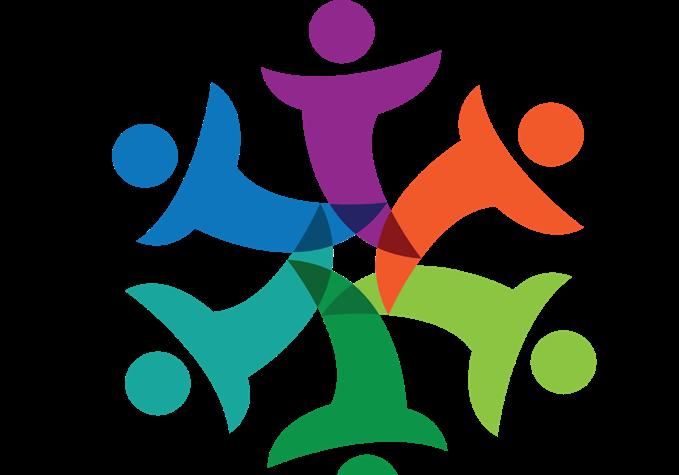
Board of Directors
Question: If it were fully domesticated, what exotic/wild animal would you wish to have for a pet?
Clara Albert, CAE (2022 Chair)
Electrical Association
Answer: “Koala”
David Siegel, CAE, IOM (Past - Chair)
Answer: “A giraffe. It could clean out my gutters easily.”
Janel Fick (Chair Elect)
Global Management Partners LLC
Answer: “If I had a forest, I’d get a gorilla – I fell in love with them when we visited the Sanctuary Gorilla Forest Camp on an international collaborative in Uganda.”
Matt Gruhn (Secretary/Treasurer)
Marine Retailers Association of the Americas
Angela Kisskeys
Associations North
Answer: “Dolphin”
Justin Bieganek
Mercury Creative Group
Answer: “Cheetah”
Carrie Chang
Minneapolis Area REALTORS®
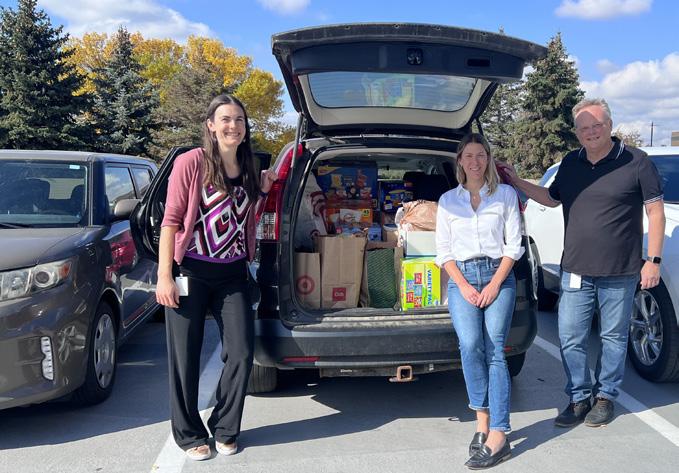
Answer: “Koala bear”
Mary Detloff, CAE
Crescendo Consulting Solutions, LLC
Answer: “Koala bear”
Maria Huntley, CAE, MANM
Minnesota Academy of Family Physicians
Karla Keller Torp
Minnesota Shopping Center Association
Answer: “Koala bear – cute, smart and cuddly…who couldn’t fall in love with that adorable face and fuzzy ears!”
Christi Kokaisel, CAE, MBA
American Academy of Neurology
Answer: “A sloth!”
Shannon Thomasser
Visit Roseville
Answer: “An owl! Only if they don’t eat my chickens.”
7
CONTENTS
5
8 Advancing
Fuel
5 Reasons Strategic
7 Advancing
7 Event-Planning
10 2
11 5 10 11 Advancing The Essentials: Invaluable Insights 3 Biggest Predictors of Employee Rentention (Especially Millenials) 16 Advancing Communications: Stay Connected 7 Tips for Communication Problems in the Workplace 15 3 Moving Forward Together 4 What’s CO-ing On? 18 Conversations 19 Calendar of Events 20 Brain Power 24 Et Cetera 25 Spotlight: Member in Motion
Cultivating Community Connections Through staff volunteer efforts, the MWCA builds camaraderie + fosters goodwill in Minnesota
Advancing Engagement + Recruitment: Moving Membership Audience vs. Community: What the Difference Means for Associations
Leaders:
For ForwardThinking
Plans Fail to be Strategic
Meetings + Events: In The Details
Lessons Learned in 2022
Advancing Diversity & Inclusion: Journey Forward Appling Our Understanding of Personal & Social Identities Within Associations




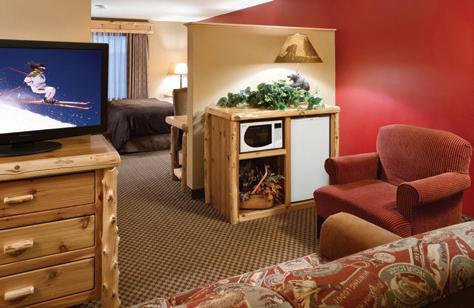

3 LeadershipSync Unlock Communications that Convert The Highly Anticipated Program Returns February 9, 2023! LeadershipSync is back for a six-part, interactive, cohort series based on the most salient challenges and opportunities facing associations. What to expect in 2023? • All-New Topics including: Understanding Your Leadership, Building Visibility + Influence, Creating a Culture of Accountability, and More! • Program Facilitated by two Bridges Consulting Executive Coaches • Complimentary Predictive Index Assessment ($200+ value) Last Day to Enroll: February 3, 2023 associationsnorth.com/LeadershipSync
What’s Going On?
Celebrating Professional Development

The best investment you can make is one in yourself and you’re in the driver’s seat. Take the initiative to advance your skills, intellect, and your association in 2023. Embrace, plan and celebrate the use of professional development dollars. Professional development betters you as a professional, your association and the nonprofit sector as a whole.
Leaders, don’t stand still. Doing nothing can be like going backward. The statistics are there, we have to help employees reach their full potential. According to Clear Company, “94% of workers said they’d stay at a company longer if their employers invested in their careers.” Take the necessary steps to create a workplace environment that encourages continual learning and growth.
When figuring out what you want to learn, identify how it will help you and your employer. Most employers understand the importance of learning and development and want you to be proactive in your growth. No matter the size, Guidestar gave three great reasons for nonprofits to invest in professional development.
1. Increased Employee Satisfaction - Better workplace morale means less burnout and more engagement. “Studies have shown that organizations who offer professional development opportunities have a higher staff retention rate than those who don’t.”



2. Better Results for Your Organization - Nonprofit management is bettering the health of the entire organization. Staff from all different departments or parts of the nonprofit can benefit from professional development. As employees gain new skills and better current skill, they energetically apply that to the organization. All of this betters the staff’s ability to drive results for the nonprofit organization.
3. “Rising Tide, Lifted Boats” - Nonprofit leaders better their organization by proving to their employees they think what they do matters by investing in their long-term growth.

Professional development is important for every professional and organization to think about. As we enter 2023, here are some opportunities to support continual learning through Associations North:
• CEOSync: January – December
• Volunteer Leader + Board Training: February 8

• Peer Genius: February
• LeadershipSync: February - July
• MarComSync: March - August
• NFusion Conference + Tradeshow: May
• Meeting Planners Symposium: July
• Fall Festival @ TopGolf: October
• Ideate + Celebrate: December
• Quarterly Virtual Micro Learning Sessions + Discussions
As always, Associations North is committed to Moving Professionals Forward and advancing associations. Need a sign to invest in your professional development in 2023? This is it. Need a local, trusted source for professional development? Associations North is it.
Here’s to celebrating professional development dollars and investing in yourself, your team and your organization. See you in 2023!
Kisskeys, President

4
Angela
Cultivating Community Connections
Through staff volunteer efforts, the MWCIA builds camaraderie and fosters goodwill in Minnesota.

Not many associations boast a track record of faithfully serving their members for more than a century, but the Minnesota Workers’ Compensation Insurers Association (MWCIA) remains committed to its mission after 101 years of operation. Representing workers’ compensation carriers that do business in the state, MWCIA provides resources such as workers’ compensation rates, continuing education, and payroll and risk exposure analysis.
In addition to the daily tasks they perform for their members, the staff at MWCIA recently began interacting more with each other and the broader community over the past several months through volunteer opportunities.

“After celebrating 100 years in 2021, our association has been reflecting on our vision, mission, and how we can thrive for the next 100 years,” explained new MWCIA President & CEO Jennifer Wolf, who started in that role in April 2022. “As part of that, we’ve been focusing on community efforts as ways for us to connect.”
To guide their endeavors, the organization put together an MWCIA Activities Committee (MAC) composed of volunteer staff members to plan events and decide what would be the focus of the association’s community involvement each month.
In September, members of the MAC decided to promote non-profit and charity endeavors. After sharing what issues were important to them individually and on the community level, each staff member volunteered for a cause of their choice. To inspire enthusiasm, there was even a friendly contest among staff members, with the person accumulating the most volunteer hours earning a donation from MWCIA to the charity of their choice.
Staff members enjoyed seeing the variety of causes that motivated their peers. They included sports charities, family member health campaigns, improving local schools, reducing environmental impact by fixing everyday items and selling them back into the community, contributing to food pantries, and financing scholarship funds.
“It was exciting to learn about the organizations that our staff members support,” said Wolf. “In addition to getting involved in the greater community, it helped bring us closer together.”
To compliment the volunteer work that staff members were doing for their personal causes, the MAC decided it also wanted to conduct a volunteer project for the entire association. Selecting a local community organization close to their headquarters south of downtown Minneapolis, MWCIA connected with the Pinky Swear Foundation. The Pinky Swear Foundation supports kids who are battling cancer and their families from its location in Edina.
After visiting with representatives at the foundation, MWCIA learned that one way they assist child cancer patients is through a pantry that families use to access food during treatments. MWCIA staff members sponsored a drive to collect food that would be donated to the Pinky Swear Foundation’s pantry. At the end of the drive, MWCIA’s small 32-member staff collected an impressive total of 280 pounds of food. It was a fulfilling endeavor to support local families experiencing a difficult time fighting childhood cancer.
September’s staff volunteer efforts were so successful that MWCIA is already considering how to expand them next year. They served as a tangible reminder that while associations like MWCIA work for their members, they also exist in a larger community. By understanding the values of their staff, members, and stakeholders, associations can contribute to society in a meaningful way and build a successful organization. It’s a tribute to the skill and power of associations that they can accomplish such lofty goals with modest resources.
“We’ve collectively gone through challenging times over the past several years with the pandemic, stress, and economic uncertainty,” Wolf said. “Finding a way to give back and be grateful for the things we have is a good reminder for us all.”
The MAC’s plans to strengthen staff relationships will continue with other activities. In early November, they hosted a chili cookoff, with staff members showcasing their culinary talents. Through these efforts, MWCIA is building a more cohesive team to make the world a little better for its members and community.
To learn more about MWCIA, visit www.mwcia. org. Additional information about the Pinky Swear Foundation is available at www.pinkyswear.org.
6
“In addition to getting involved in the greater community, it helped bring us closer together.”
5 Reasons Strategic Plans Fail to Be Strategic
Mary Kay Delvo, INspiring SIGHT
Roberta is the executive director for a midsize nonprofit organization. She and her staff are passionate about their work, yet her team isn’t producing to the level they are capable of. Most are highly skilled and professional, yet they struggle to really get traction. She hears things from them like, “I’m not sure what we should be doing next” and “Every time the board meets, we just get more work.” On top of that, several veteran staff recently resigned and they are struggling to fill the new positions. She is concerned more will follow.
The board, while deeply committed to the organization, provides little guidance or direction. They tell her to follow the strategic plan they spent all that money on a couple of years ago. But since then, the pace of decision-making has sped-up, and the scenarios are more complicated. Roberta feels alone and not sure what to do next to keep the organization moving in the right direction.
Over the course of my 25+years of working for and with organizations, I have discovered an interesting phenomenon around the process of strategic planning. Just because one has a strategic plan, doesn’t mean it is the right plan, and certainly doesn’t mean the organization will follow-it. My experience and observations have led me to the five reasons strategic plans don’t produce desired results.
1. Strategic plans are rarely based on honest feedback and complete information.
When in a room together, board members and staff are often reluctant to be completely forthcoming when talking about organizational needs or blind spots. Power differentials, politics, territory, pet projects, fear of retaliation
and personality clashes often play an intervening role in preventing the reality of the organization’s culture from surfacing.
the break room. Additionally, a strategic plan done right creates a framework for your organization’s talking points and marketing materials. Most strategic plans are written in narrative form over 10 or more pages. I help organizations create a one-page Strategic Alignment Map© so it is accessible and utilized in every discussion and decision-making session.
2. Inefficient use of the full board’s time. The executive director, who nearly always struggles to get the board in a room together, has so much information that requires discussion, the agenda is over-packed and rich conversation is cut short. Typically, boards spend the morning doing some form of information gathering / SWOT Analysis. By time they get to decision-making, it is afternoon and board members have lost focus and are restless to get back to their paying jobs, making decision-making rushed and not very strategic—reducing their return on investment for the strategic planning process right out the gate—a huge disservice to the executive director and ultimately, the organization.
3. Role confusion and blurred lines between vision and mission. Board members and leadership teams often lack understanding of the difference between governance and management roles, one of the major reasons executive directors walk off the job. Equally confusing, is the small but important difference between what vision and mission each mean and how each contributes to the success of the organization. Utilized together the vision, mission, and strategic priorities serve as a guide or ‘litmus test’ for decision-making across the entire organization from the board room to
4. Strategy doesn’t align with the organizational reality and lacks the employee voice.
The strategic plan is often created without solid knowledge of how the organization operates. A vision and mission without meaningful connection to the actual work will never be realized.
5. Staff and board members lack the muscles required to keep the plan alive in their day-to-day.
Asking strategic and awareness-raising questions is a developed skill and mindset which most employees and leadership teams don’t possess. Having a plan does little for you if you don’t know how and when to ask the necessary questions for digging deeper, assessing, and connecting everyday actions and decisions to broader visions and purpose. This is an essential component of plans that work. This skill connects directly to accountability. Bonus Reason: Many visions and missions are the length of an abstract vs a headline— making them uninspiring, not repeatable, and lacking clarity. If you can’t visualize it, you can’t realize it and if you can’t repeat it, you can’t live it.
Strategic plans are the map for your entire organizational system. When only understood and discussed at the board and leadership team level, there is a reduced chance of it living out through your staff, organization, and stakeholders.
Advancing Leaders: Fuel for Forward-Thinking
“It is not possible to solve what we cannot talk about or see, which is why the elephant in the room’ interferes with an organizations ability to create an effective strategic plan.”
Audience vs. Community:
What The Difference Means for Associations
Jose Triana, Sidecar
As associations, you already have an engaged audience – your members. And these highly engaged people can often be the basis for a thriving community where members come together, interact, grow, and engage with one another. However, with an often widely dispersed audience and only a few annual meetings on the calendar, are you doing enough to foster that dynamic? In his opening at INBOUND22, HubSpot co-founder and CTO, Dharmesh Shah, discussed the importance of community and how organizations can use it as their next strategy for growth.
Audience vs. Community –Why It Matters
Although “audience” and “community” sound the same, there is often a fundamental misunderstanding of their definition and what they mean for organization.
spaces discuss the topic of interest, share knowledge, learn from others, and build their networks.”
How It Fits for Associations
Understanding this difference is essential when considering the content and offerings you’ll create as an organization. Although a big audience is great, it can also become a “vanity metric.” It looks great on paper, but it may not be impacting your association’s bottom line. What is? The members paying their annual dues, attending your conferences, and evangelizing your organization.
Building Your Association Community
As Shah puts it, “a community does not have to be huge in order to be valuable to its members. It just needs to connect the dots.” Whether you’re connecting members with professional development resources, career opportunities, or networking and mentorship relationships, the community is worth the price of admission.
diverse perspectives. Associations should prioritize creating a safe space for members that celebrates different backgrounds, cultures, and geographies.
Engagement – Your members want to connect, and as you build a community, facilitating this connection is vital. The easier you make it to communicate, the more your members will do so.
Action – Creating a welcoming and constructive community is great, and so is revenue for your organization. A community can become a source of non-dues revenue if you leverage it to promote premium content or partnerships with other organizations.
Learning – The bottom line is that a community is designed for learning. Whether they’re learning from the content your association is creating or using it as a place to learn strategies and talk through issues they’re having in their own organizations, the community members need that space to become a place of learning.
Audience – For most associations, a focus on audience is prioritized to grow reach. Put simply, your audience enjoys your content, but that’s where the relationship ends. They often aren’t members (although they can be), but more importantly, they don’t engage beyond the initial read.
Community – A community brings an audience together for a shared experience. “[It] is a social space where people come together around a shared interest, challenge, or goal,” says Duncan Elder in a post for Tribe. “People in these

So, how can associations prioritize their offerings to build a better community? Shah outlined the elements of a community that maximizes value for its members with an acronym – I.D.E.A.L.
– identity, diversity, engagement, action, and learning.
Identity – While you want to know your member’s roles and experiences, you must also understand what moves the needle for them. Their goals, interests and values inform their identity and what they hope to gain from your association membership.
Diversity – As a community, you aren’t just responsible for bringing people with common interests together; you also need to bridge the gap between
Understanding the Impact of Your Community
There is no question that association communities are valuable – it’s why members remain members. However, as the workplace continues to evolve and legacy members retire, community can become the unique selling point your organization needs to double down on to keep your membership growing.
Look at what your organization already has in place. Because of your membership model, there is already a built-in community. It is just a matter of unifying it and providing the value your members crave.
Engagement + Recruitment: Moving Membership
Advancing
8
Access to Industry Experts









Your Voice + Needs Prioritized


Meet
9
Onsite
assistance is available for: • Catering • Lodging • Pre- and post-event activities • Local speakers and more DISCOVER THE IronRange.org Call for a tour! 218.749.8161
on the Range Host your next meeting or group event on Minnesota’s Iron Range, located just one hour north of Duluth. Our state-of-the-art meeting spaces are just steps away from trails for every season and adventure.
planning
experts bring their game-changing insights to you and your organization.
National
content customized to group priorities, designed to incorporate what YOU see as topics of greatest need and interest as the year progresses.
CEOSync incorporates
offering
Exclusive
Your Community of Trust + Understanding
intentional professional relationship building approaches,
support, encouragement, and advice from your fellow peers. Celebrate successes (big and small) and offer support in times of need.
ideas, solutions, tactics, strategies,
Right-Time + Right-Size Solutions New
and renewed inspiration.
cost-savings
revenue
Group Think Tank Immediate access to a peer advisory group to share
strategies,
generating ideas, and learn first-hand from others who have tried and tested.
NEW: CEOSync Retreat An optional extended learning and connection experience exclusive to CEOSync participants.
Last Day to Enroll: January 15 | Program starts January 26 associationsnorth.com/CEOSync23
you’ll get
CEOSYNC The ultimate collaboration of elite leaders What
from CEOSync:
7 Event-Planning Lessons Learned in 2022
 Kara Nacarato, Event Garde
Kara Nacarato, Event Garde
1. Everything costs more. It seems the trend of increased costs is something we will need to plan for moving forward. Hotel rates, airfare and transportation seem to be the leading culprits however, rising costs in other services is being seen as well. It appears this is a trend we will need to continue planning for in 2023. It will be more important than ever to negotiate food and beverage costs such as locking in current rates for future events. Working with your venue and other suppliers early on in the planning will be necessary to help you manage your event budget accordingly.
2. Everything takes longer. Between staffing shortages and supply chain disruptions, everything is taking longer than usual, and we need to plan ahead for these delays. Staff turnover at event properties has been an issue I’ve seen firsthand this year, and this inevitably stalls production. Quite often hotel staff is juggling multiple positions to account for staff shortages and even their response time to your requests are extended.
3. Contract negotiations are different. Because of rising costs, low venue inventory, and supply chain issues properties and suppliers are being less generous with concessions and discounts. I’ve especially witnessed this while sourcing venues for clients for 2023 and 2024. As the demand for space increases, hotels are less willing to “throw in” extra goodies such as room amenities, free F&B for your staff, upgraded rooms, etc. Additionally, room rates are coming in higher, and food and beverage minimums have gone up considerably with less room for negotiation. As event planners we must be very specific about our needs and expect to go back and forth several times while negotiating contracts.
4. Travel takes extra time…and patience. This is a big one! Not only have costs for travel skyrocketed, but the time it takes – and the uncertainty of actually getting there – is playing a big part in events. Earlier this fall while attempting to fly into Houston for a client event, I woke up to a Delta alert that my flight was cancelled. Not delayed, not rescheduled…CANCELLED. After searching for alternative flights, I was fortunately able to find an option that would get me there in time for event set up for their one-day event. However, I’ve seen and heard of these stories plaguing events this year. From stranded speakers, to delayed attendees, we need to anticipate that travel woes will occur – and plan accordingly. While extra room nights adds to
the overall cost, flying in early, or bringing in speakers ahead of time may be worth the cost to ensure your event goes on as planned.
5. Don’t rely solely on historical data. Attendee behaviors have changed. Since the pandemic, it seems people are waiting longer to register for events, or they are making decisions on-site about adding additional sessions, tours and meals. This is a concern for meeting planners who rely on past data to predict F&B numbers and hotel room night pickups. What we used to be able to predict has become more challenging post-pandemic. Be sure you are watching your numbers more closely, and more often, as you plan your event. And, when you are onsite, prepare your banquet team for possible last-minute adjustments. This is also important to keep in mind when negotiating your contracts. Try and give yourself as much time as possible to lock in guarantees.
6. Registration numbers are still recovering. While inperson events seem to be back in full force, most events that I managed this year continued to see a decrease in attendance. This is making it difficult to predict future events when sourcing venues as we do not know when, or if, we will return to pre-pandemic numbers. Additionally, it is crucial to manage exhibitor expectations when it comes to attendance numbers. The good news is that the attendees who are there are excited to be back in person and seem to be more engaged with each other, and exhibitors throughout the event. Similarly most exhibitors I’ve talked with understand that we are still working our way back to pre-pandemic levels and they seem pleased with the progress and the opportunity to be networking, inperson, with buyers.
7. COVID protocols should still be considered. Over the year, I have worked on events that still required masks and temp checks, as well as events that had minimal COVID protocols. The big lesson-learned for me is that you need to, at the very least, have a plan in place in the event a COVID breakout happens onsite. Things to consider include, knowing the nearest testing centers, will you have tests onsite available for attendees/staff, how will you communicate an outbreak onsite, and how will the venue support you? Talk with your staff and your event partners, to determine your protocols ahead of time so that you are not caught off-guard if this happens on site.
Advancing Meetings + Events: In The Details 10
Applying Our Understanding of Personal & Social Identities Within Associations
Aaron Wolowiec, Event Garde
During the pandemic, partially in response to the heightened awareness around racism brought about by the killings of George Floyd, Breonna Taylor, and other people of color, I was introduced by my colleague to the University of Michigan Inclusive Campus Collaborative. The Collaborative seeks to foster a campus climate in which all community members feel respected, valued, and empowered to engage in the life of the university.
Among the resources developed and shared by the Collaborative and its subcommittees over the years are the following two wheels, which I’ve found particularly interesting and useful in helping association staff, volunteer leaders, and/or members better understand themselves, one another, and how they can improve their interpersonal relationships: Personal Identity Wheel and Social Identity Wheel.
The Personal Identity Wheel is an activity that encourages participants to reflect on how they identify outside of social identifiers. The worksheet prompts participants to list adjectives they would use to describe themselves, skills they have, favorite books, hobbies, etc. This wheel does not emphasize perception or context.
After completing the wheel and sharing a select number of items (e.g., three to five each) with the identified group (e.g., staff retreat or board orientation), the following conversation can be used to further debrief the activity:
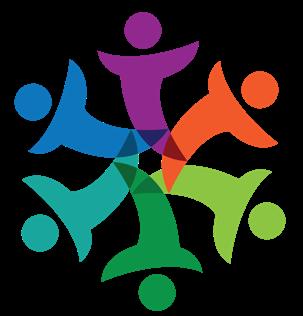
• What is one word from your wheel that catches your attention?
• What was easiest to identify?
• What was hardest to come up with?
• What were some things people found in common with each other?
• What are some ways knowing these things about each other might help us build relationships?
• What’s one way the things you named might show up in your role within our team? Our organization?
Access the Personal Identity Wheel: https://tinyurl.com/PersonalWheel
The Social Identity Wheel is an activity that encourages participants to identify social identities and reflect on the various ways those identities become visible or more keenly felt at different times, and how those identities impact the ways others perceive or treat them.
The wheel prompts participants to fill in various social identities (such as race, gender, sex, ability disability, sexual orientation, etc.) and further categorize those identities based on which matter most in their self-perception and which matter most in others’ perception of them.
After completing the wheel, the following conversation can be used to further debrief the activity:
• Which identities do you think about most often?
• Which identities do you think about least often?
• Which of your own identities would you like to learn more about?
• Which identities have the strongest effect on how you perceive yourself?
• Which identities have the greatest effect on how others perceive you?
• Which personal identities, if any, are informed by your social identities?
• Why is it important to reflect on our identities?
• What is the value in completing activities like this?
• How might these social identities impact our team? Our organization?
Finally, I recommend each person identifies personal commitment to action. For example, what is one action you are personally committed to as you reflect on your personal and social identities, and their relationship to your teammates and the organization? What next steps should we commit to as a team and/or organization?
Access the Social Identity Wheel: https://tinyurl.com/SocialWheel
11
Advancing Diversity & Inclusion: Journey Forward 1
A COMMUNITY LEADING THE PATH FORWARD
As the catalyst city for a nationwide movement in 2020, Meet Minneapolis stands in solidarity with leaders from all backgrounds in recognizing the need to transform our city from the inside out – to ensure Minneapolis is both a safe and equitable place for everyone to live, work and visit.
DELTA AIR LINES HUB, COMPACT CITY - EASY TO EXPLORE
MSP Airport is a Delta Air Lines hub, located within a 3-hour flight from almost everywhere in the U.S. and the Light rail connects attendees straight to our compact, walkable downtown with dozens of entertainment options. Our Skyways – enclosed, second-level walkways connecting buildings in 80 blocks – keep people comfortable and dry, year-round.
AWARD WINNING MINNEAPOLIS CONVENTION CENTER
With 1.2 million feet of meeting space, our award-winning convention center is leading the way with health and safety. The MCC Client Event Health & Safety Plan and GBAC STAR Accreditation demonstrates that priority with a growing list of successfully hosted, safe events.
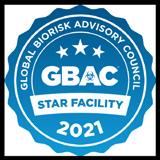
9,000 ROOMS DOWNTOWNALL BRANDS, ALL BUDGETS
Minneapolis has all the hotel brands to fit all budgets. Plus, with more than 4,500 rooms conveniently connected to the Minneapolis Convention Center via skyway, attendees are always a quick indoor walk from the day’s meetings and events.
UNIQUE MEETING & EVENT VENUES


Historic, modern, on the water, or on a rooftop with breathtaking views – big events or small – Minneapolis has just the unique venue to ensure your attendees will have a “most talked about event” experience with the Instagram photos to prove it.
GREAT BITES, BREWS & FUN FOR EVERYONE
There is a reason Prince chose to stay in his hometown Minneapolis! Bring an appetite and an extra bag as to explore Minneapolis’ unique restaurants, shops and attractions. No sales tax on clothing & shoes, a top craft beverage scene and global flavors mean when the meeting ends – the fun begins!
CITY BY NATURE: TOP PARKS, 22 LAKES & THE MIGHTY MISSISSIPPI
A concrete jungle we are not. In the city with a top ranked park system in the nation, our Chain of Lakes, the mighty Mississippi River, two waterfalls, and more than 200 miles of biking and hiking trails just steps from the urban action, we can guarantee you’ll have endless options to enjoy a day of outdoor adventure regardless of the season.
INCENTIVES: GET MORE FOR LESS IN MPLS
Don’t miss these incentives for meetings held in 2022-2024! Meet Minneapolis, the Minneapolis Convention Center and our hotel partners have pulled together some of the most attractive incentives in the industry on room nights, F&B and more!

12
SueM@minneapolis.org
Sue Murray |
7 Tips for Communication Problems in the Workplace
Zenefits Team, Workest by Zenefits
Communication problems in the workplace are common, but they can be avoided. In fact, breaking down these barriers is one of the most important things you can do for productivity and employee engagement.

1. Information Overload. Based on feedback at many companies over the years, it’s clear that one of the most irritating sources of low productivity and communication problems in the workplace is email overload. While email is a communication essential, it can be overwhelming to check 50-plus emails first thing in the morning — several of which may not have anything to do with your most pressing responsibilities.
Fortunately, many tools can lighten the load here. Create a direct channel of communication to funnel essential details to your direct reports with information pertinent to their immediate responsibilities. Separate and prioritize other internal communications that can wait by using a work communication app like Trello, Slack, or Basecamp to post updates directed to specific functional teams in an organized, streamlined way. This helps employees save time by seeing what they need to see while not getting bogged down in details that don’t impact their job.
2. Caution: Jargon Ahead. It’s one thing if you’re communicating with longtime employees who understand your jargon, but if you’re working with crossfunctional teams or new hires, steer clear of too many abbreviations and too much jargon. One of the best ways to improve communication is to use simple, direct language that spells things out clearly. However, a certain amount of jargon can be part of a company’s culture.
Provide new employees with a glossary of commonly-used terms they will hear on the job. Effective communication depends on being fully understood.
3. No Central Location for Documents.

Helping employees help themselves is a great way to boost performance and avoid decreased morale. If you don’t have a central repository for essential documentation, and separate locations for mission-critical documentation for different departments, employees have to waste time hunting for information instead of getting the job done. Having a regularly-updated company intranet, or creating a Sharepoint site can remove workplace these challenges.
4. Passive listening. Passive listening is where you just kind of hear what someone is saying, but you don’t really register it because your attention is on something else. It’s one of the most common displays of poor communication skills. Switch this out for active listening skills instead. It is one of the most important communication skills you can learn, both for personal and professional conversations. Try these measures:
• Put your phone on mute and don’t check texts or take any phone calls during the conversation
• Give the person eye contact

• Think less about your response and more about understanding
• Ask clarifying questions and repeat what you think they said to ensure mutual understanding
Nonverbal communication cues and body language techniques not only help improve workplace communication, but also help employees understand and feel you are really registering what they have
to say. Always keep cultural differences in mind, however. If you work across cultures, understand that direct eye contact can also be intimidating for some. Cultural awareness is always a great way to create an inclusive, thriving workplace culture overall.
5. Not providing positive feedback. Everyone likes to hear when they’re doing a good job, so it’s a big mistake to forget to express gratitude and share feedback for a job well done. Instead, have each employee’s direct manager catch them doing a good job and give frequent positive shout-outs. Consider starting group initiatives where everyone is encouraged to notice and call out each other’s positive contributions.
6. Leaving people out of the loop. In this new era when remote employees make a larger share of our workforce, you might not see these employees except at the weekly video meeting, even though they’re putting in some great work. This can be a disaster on many levels. So make sure you are using the right classical and digital communication methods (email, phone, collaboration apps) to ensure everyone is connected to the rest of the team.
7. Letting employee feedback drift. Remember that team meeting where you requested employee input? What did you do after you got that input? If nothing has changed and employees continue to struggle, employee engagement and willingness to communicate will decrease, and so will the bottom line. Make being proactive and acting on input in a timely manner part of your organizational communication strategy.
13
Advancing Communications: Stay Connected










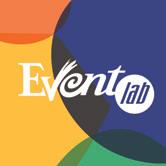
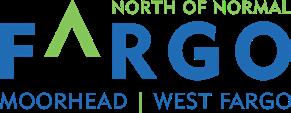





THANK YOU TO OUR OUR PARTNERS! THANK YOU FOR SPILLING THE TEA WITH US! Meeting Planners Symposium Photos courtesy of Korey McDermott Additional event photos can be viewed at tinyurl.com/MeetingPlanners2022 Returning July 2023! Here’s what one participant said about Meeting Planners Symposium “TheMeetingPlannersSymposiumisawonderfuleventforbothnewerplannersand moreseasonedplanners.It’saplacetolearn,askquestions,talkabouttrends,andmake valuableconnections.Highlyrecommend!







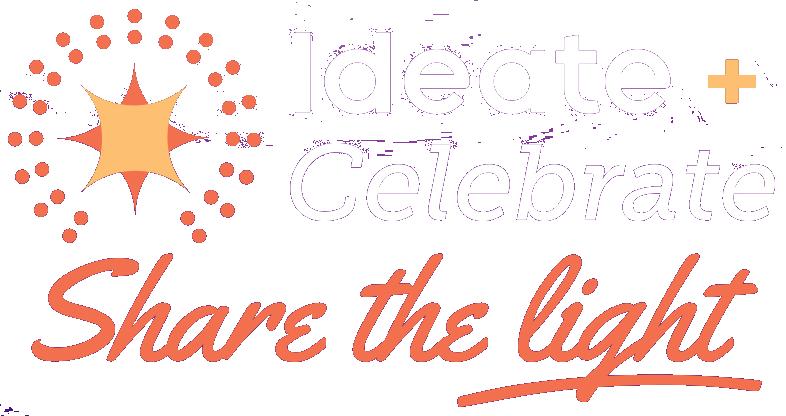







YOU TO OUR OUR EVENT PARTNERS! YOU LIGHT UP OUR WORLD! THANKS FOR JOINING US AT
can be
THANK
Photos courtesy of Lauren B Photography Additional event photos
viewed at https://flic.kr/s/aHBqjAjb12
Advancing The Essentials: Invaluable Insights
3 Biggest Predictors of Employee Retention (Especially Millennials)
Stacy Pollack, Workest by Zenefits
If you’ve ever had a job where you loved the work but not your employer, or where you’ve been proud of the company’s mission but felt distanced from your colleagues, then you know how important it is for all these factors to exist in tandem.
Finding this sweet spot is much like what the Japanese call “ikigai,” which loosely translates to “reason for being.” It’s the point at which your passion and talents overlap with what the world needs and what it’s willing to pay for.
Will they stay or will they go?
In our research on millennials in the workplace, we found our own version of ikigai, in which passion, pride, and personal connection must overlap. Together, they form the three keys that indicate whether an employee is likely to stay with a company or to recommend their workplace to others.

While this applies to employees of all generations, in our research, Gen Xers and baby boomers were more likely to positively weigh statements like “I’m proud to work here” and “I enjoy the work” than their millennial counterparts. In other words, millennials are more discerning when it comes to ranking passion and purpose in the workplace –and therefore more likely to leave if a job feels out of alignment.
For our 2021 Fortune Best Workplaces for Millennials™ list, we surveyed over
330,000 millennial employees at U.S. companies across industries, assessing their experiences of trust, innovation, company values, and leadership. Our results found that millennials are nearly four times more likely to intend to leave a job than boomers, and 11 times more likely than Gen Xers. But when workplaces hit the ikigai bullseye, the risk of millennial turnover drops.

3 Keys to Millennial Employee Retention in Your Workplace
1. Reputation: “I’m proud to work here” Perks like ping pong tables and breast milk shipping have been flaunted as ways to attract a millennial workforce. But the Best Workplaces recognize it is about so much more than that. Employees need to have pride in their work and in the company overall.
“Perks are awesome, but I don’t necessarily think that perks are what keep our employees engaged,” says Alex D’Amico, senior director of talent strategy at Better.com. “Do they believe in the work they’re doing? Do they believe the company is listening and changing based on their feedback?”
2. Purpose: “My job has special meaning” At the Best Workplaces, 80% of millennial employees say their work has special meaning and is more than “just a job.”
For example, Zillow views its mission as empowering people to take the next step in home ownership – something all employees can feel a part of. The company landed at #24 on the Best Workplaces for Millennials list.
“Putting the customer front and center at everything we do keeps us grounded and humanizes our work,” says Leah Sakas, vice-president of central operations.
“[It] helps us make sure we’re focusing on the things that matter to real-life people. It’s a pretty rare opportunity to shape one of the most significant moments of people’s lives.”
3. Connection: “I enjoy the work” How connected are your colleagues? At the Best Workplaces, 92% of millennial employees say people look forward to coming to work.
For employees to enjoy the day-to-day, they need a workplace that allows them to bring their whole selves to work, collaborate with colleagues, and have a bit of fun while doing it.
For Bankers Healthcare Group, it’s all about creating a family dynamic that encourages collaboration within teams, says Tyler Crawford, chief operating officer. “It’s really giving people freedom and surrounding ourselves with peers who not only hold us accountable, but push for creative thinking, push for innovation, push for new ideas.”
The sweet spot: peak job satisfaction
It takes effort to create a workplace that attracts and retains talent – millennial or otherwise. The Best Workplaces achieve this by conducting regular employee engagement surveys, defining their company’s north star, and encouraging connection while still valuing individuality.
But the payoff to satisfying these three keys is increased employee engagement and lower turnover. And as any employer who’s struggled with recruitment knows, that’s a sweet spot, indeed.
16






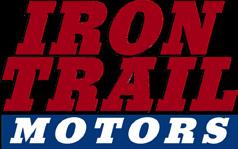






marykay@inspiringsight.com | 612-750-0814 Strategist|Certified Facilitator|CertifiedCoach|Enneagram Coach |Enneagram Leadership Trainer www.inspiringsight.com "Organizations with the desire to evolve, grow & take risks, view us as an asset." Leadership & Peer Group Coaching Strategic Planning & Board Development Facilitation & Enviornmental Scanning EVENT CENTER Work.·.Play.·.Explore EVENT SPACE FOR ANY FUNCTION... WORK OR PLAY · BIG OR SMALL. I N V I R G I N I A M I N N E S O T A 919 6TH ST S , VIRGINIA, MN 55792 | 218-748-7500 IRONTRAILMOTORSEVENTCENTER.COM Surround your meeting with history and adventure Minnesota's newest venue for tradeshows, conferences, meetings, and more!
M.A., CAE, CMM Chief Operations Officer Synergos


First, you must acknowledge that you have personal feelings about that decision. Then I would journal about it so I know what they are which would then make it easier to set them aside.

I’ve always been impressed by those who can model objectivity with a “poker face” and try not to give my comments any type of “spin” - politically, personally, or otherwise. On the other hand, I think it’s important to examine any personal feelings that might be coming up and see if they’re actually pointing to something relevant to the situation.
 Conversations: In Focus | Different viewpoints. Different solutions.
Howdoyouseparateyourpersonalfeelingswhenmakingadifficultworkplacedecision?
Joy DesMarais-Lanz,
Abbey Bryduck Executive Director MN Asphalt Pavement Association
Conversations: In Focus | Different viewpoints. Different solutions.
Howdoyouseparateyourpersonalfeelingswhenmakingadifficultworkplacedecision?
Joy DesMarais-Lanz,
Abbey Bryduck Executive Director MN Asphalt Pavement Association
Returning February 2023 More details + registration coming soon!
2023 Calendar Snapshot 19 More programs and event dates to be added. We will continue to reach out with further event details and volunteer opportunities. Visit www.associationsnorth.com/calendar Webinar Jan 10 | Right-Now Solutions for Data Privacy and Cybersecurity Associations North Office Closed Jan 2, May 29, Jul 4, Sept 4, Nov 23+24, Dec 25 - Jan 2 January SUN MON TUE WED THURS FRI SAT 3 10 17 24 9 8 6 5 4 7 11 18 12 13 19 20 27 14 21 15 28 16 23 22 29 30 25 26 1 2 31 February SUN MON TUE WED THURS FRI SAT 7 14 21 6 5 3 2 1 4 8 15 9 10 16 17 24 11 18 12 25 13 20 19 26 27 22 23 28 March SUN MON TUE WED THURS FRI SAT 7 14 21 6 5 3 2 1 4 8 15 9 10 16 17 24 11 18 12 25 13 20 19 26 27 22 23 28 29 30 31 April SUN MON TUE WED THURS FRI SAT 1 8 15 22 29 7 6 4 3 2 5 9 16 10 11 17 23 18 25 12 19 13 26 14 21 20 27 28 30 24 June SUN MON TUE WED THURS FRI SAT 6 13 20 5 4 2 1 3 7 14 8 9 15 16 23 10 17 11 24 12 19 18 25 26 21 22 27 28 29 30 July SUN MON TUE WED THURS FRI SAT 1 8 15 22 29 7 6 4 3 2 5 9 16 10 11 17 23 18 25 12 19 13 26 14 21 20 27 28 30 24 31 August SUN MON TUE WED THURS FRI SAT 1 8 15 22 7 6 4 3 2 5 9 16 10 11 17 18 25 12 19 13 26 14 21 20 27 28 23 24 29 30 May SUN MON TUE WED THURS FRI SAT 2 9 16 23 8 7 5 4 3 6 10 17 11 12 18 19 26 13 20 14 27 15 22 21 28 29 24 25 1 30 31 31 September SUN MON TUE WED THURS FRI SAT 2 9 16 23 30 8 7 5 4 3 6 10 17 11 12 18 19 26 13 20 14 27 15 22 21 28 29 1 25 24 October SUN MON TUE WED THURS FRI SAT 3 10 17 24 9 8 6 5 4 7 11 18 12 13 19 20 27 14 21 15 28 16 23 22 29 30 25 26 1 2 31 November SUN MON TUE WED THURS FRI SAT 7 14 21 6 5 3 2 1 4 8 15 9 10 16 17 24 11 18 12 25 13 20 19 26 27 22 23 28 29 30 December SUN MON TUE WED THURS FRI SAT 2 9 16 23 30 8 7 5 4 3 6 10 17 11 12 18 19 26 13 20 14 27 15 22 21 28 29 1 25 24 31 Professional Development Feb | Peer Genius May | NFusion Conference July | Meeting Planners Symposium Cohort Groups CEOSync Jan 26, Feb 24, Mar 24, Apr 28, May 12, Jun 9, Jul 21, Aug 18, Sep 28+29, Oct 27, Nov 17, Dec 15 LeadershipSync Feb 9, Mar 9, Apr 13, May 11, Jun 8, Jul 13 MarcommSync Mar 15, Apr 12, May 17, Jun 14, Jul 11, Aug 9 Special Events Oct 5 | Connections Cup at Topgolf Dec | Winter Celebration with Annual Meeting + Auction
Nearly every association uses unique onboarding email messages or campaigns to engage new members—96% of trade associations and 99% of professional associations. The association leaders who responded to the New Member Engagement Study ranked email as somewhat more effective for professional associations than trade associations – but could be more effective for both.
Since email is the leading communication channel associations have with their members, early emails must be engaging. We want new members to love our emails, so they want to keep reading them.
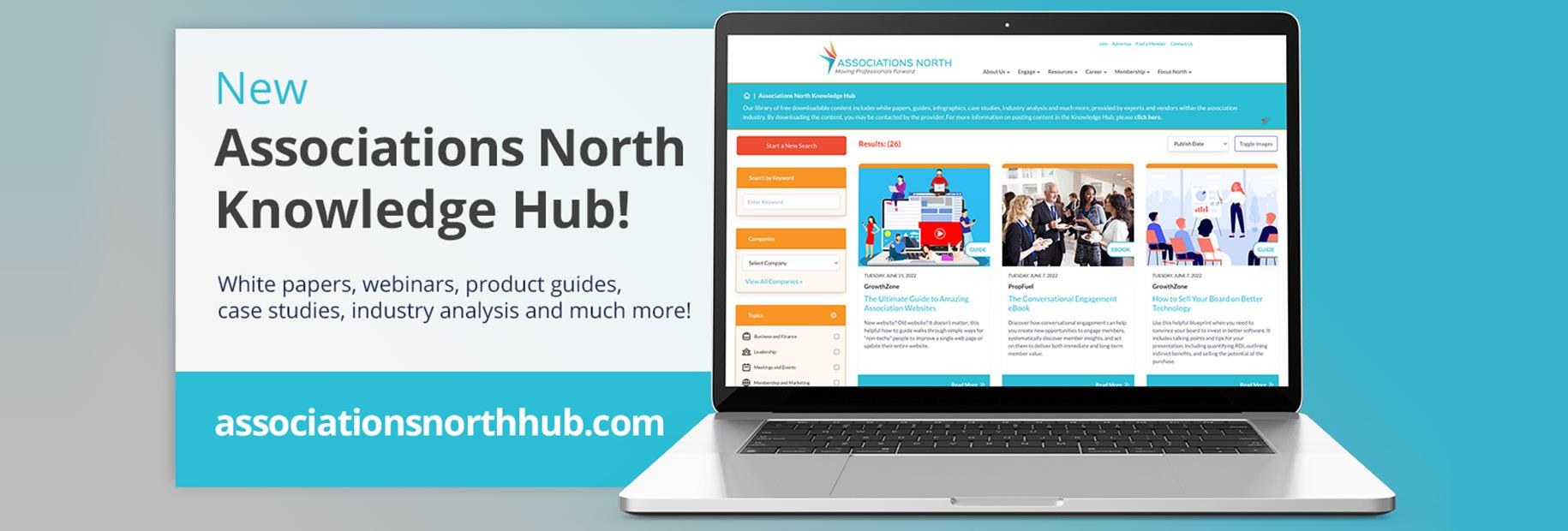
The good news is there’s already one thing working for us. New members want to know more about the organization they just joined, so they tend to be super-readers of email. The open rate for new members is 48%, while only 31% for all members. This metric is somewhat telling about the effectiveness of emails. My hypothesis is many emails are not engaging for new members priming them to ignore subsequent emails.
So, how do we get new members to LOVE our emails?
Meet New Members Where They Are At
For some associations, members and member organizations follow a very predictable path. For example, perhaps for a professional association: a graduate looks for a job, is offered the job, and then must learn a ton of specific technical information. For a trade association, perhaps an organization joins when they become large enough to be impacted by government regulations. When we know each milestone, the pain it causes, and have solutions – we can take new members on a step-by-valuable-step journey. But many associations have members joining who have different needs, mindsets, goals, and challenges – all at different times.
Ask Them What They Need
If your association has a very varied new member group, it’s hard to know what problem you are solving for them and when. The more emails they get that don’t connect with where they are right now, the more likely they will ignore you. One way to get around this huge problem is to ask new members what they need. Yikes! You might be thinking. We’ve got hundreds or thousands of members joining each day, week, or month – what you are proposing, Amanda, would be impossible. You are right! Until recently, it was impossible.
Imagine knowing that your new members likely were interested in five overall topics. Once they choose one of the five, they are offered 3-4 sub-topics. Selecting the most meaningful sub-topic brings them to an article, whitepaper, video, event, working group, etc. And boom! In two clicks that take, oh, maybe five seconds, your new member is enjoying the content they need right now. All this magic comes from our friends and sponsors of the study, PropFuel. They’ve got an e-book you should check out.
Abide by the 3 F’s Fast, fun, and focused, that is! (where did you think I was going with that? This is a G-rated blog). First, you want to be fast Readers scan emails and expect them to take a few seconds to read. When crafting your new member emails think sentences, not paragraphs: the fewer words, the better. Second, fun emails are more captivating. Consider your tone. Try lightening up on the uber-professional tone and make messaging more conversational. Finally, focus on a single call to action. Often welcome emails can be like listicles—14 benefits, followed by 20 popular articles, followed by seven upcoming events. With one quick scroll, new members have tuned you out. Think of one problem with one solution with a single call to action.
BRAINPOWER
ONBOARDING EMAILS A THORN IN YOUR SIDE?
ARE
20
Amanda Lea Kaiser, Smooth the Path


21 68-2821_Focus_North_Upgrades_FEB22.indd 1 2/22/22 11:07 AM






22


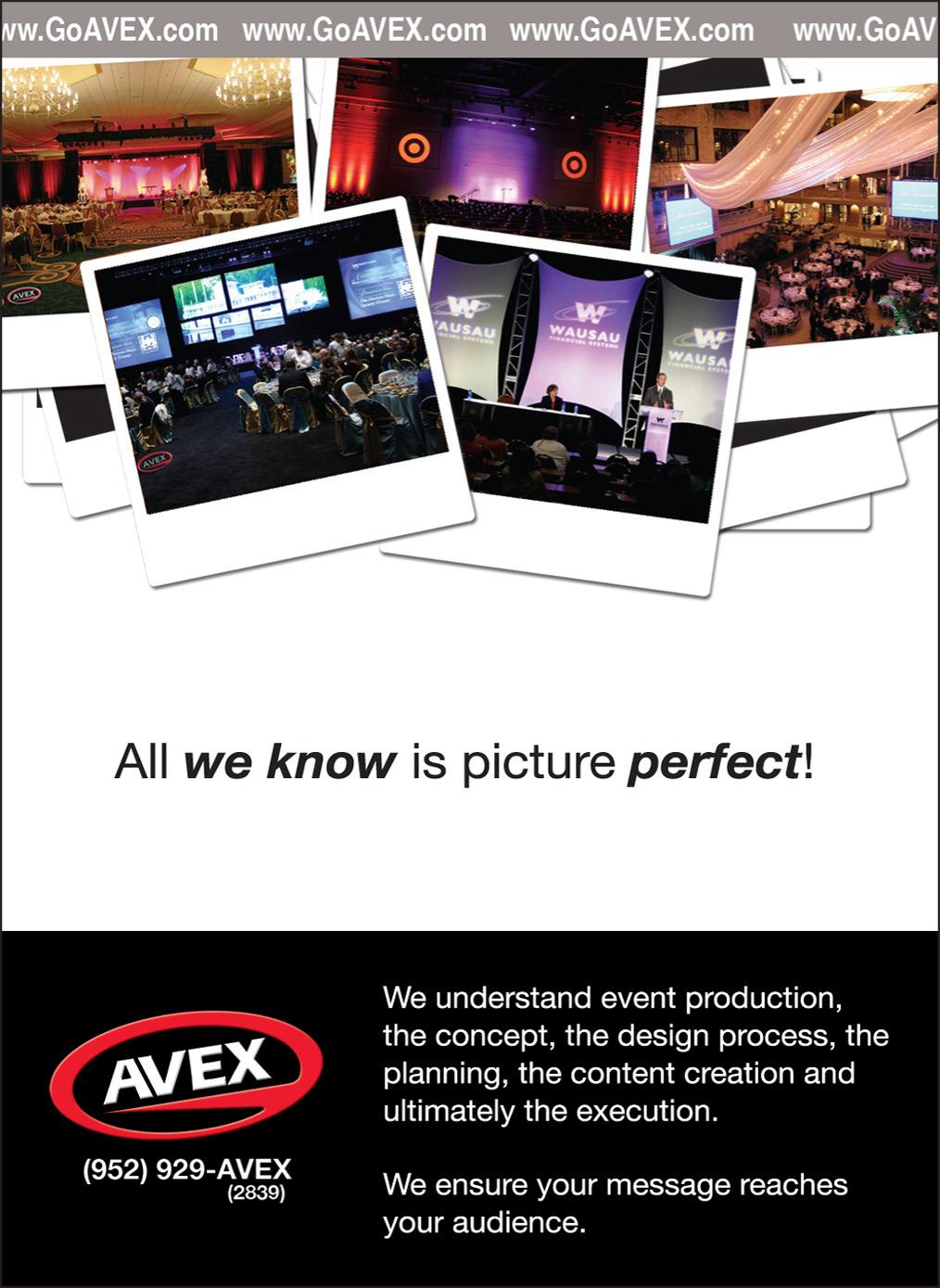
23
WELCOME, NEW MEMBERS!
Sarah Adams Housing First Minnesota
Melissa Andrisani Housing First Minnesota
Peter Black Ewald Consulting
Barbara Boelk MN Corn Growers Association
Emily Bostic Harrington Company
Kate Heesen Harrington Company
Sarah Hinderman Housing First Minnesota
Aimee Keenan Ewald Consulting
Mandi Kendar Ewald Consutling
Kaeleen Laird Association for Corporate Growth-Minnesota Chapter
Leigh Larson MEA Energy Assoication
Emma Mcintire Gradute Minneapolis
Tashika Parker Radisson Blu Mall of America
Courtney Peters Ewald Consulting
Megan Pfefferie Global Management Partners, LLC
Andrew Pulliam Innovative Publishing
Nick Rathke Harrington Company
Shereen Reda MN Social Services Assoication
Katie Ressie Great Wold Lodge - Minnesota
Betsi Roach Corporate Legal Operations Consortium
Jen Rodriguez Association for Corporate Growth-Minnesota Chapter
Seth Rueter Minneapolis Area REALTORS
Jessica Ryan Housing First Minnesota
Shannon Schaaf CFA Society Minnesota
Tonisha Smith Global Management Partners, LLC
Brennan Summers Global Management Partners, LLC

Lauren Thomas Harrington Company
Monique Thompkins CultureBrokers, LLC
Megan Thorstad Harrington Company
Tyan Tibbitts MN Veterinary Medical Association
Katy Jo Turner MN Social Services Association
Daniele Villa Visit Duluth
Ericalynn Vojacek American Academy of Neurology
Cheren Werner Harrington Company
Kevin Zabel AARM
Reminder: Review Your Profile
If you haven’t visited your member profile in a while, now is the perfect time to make any and all updates. You can also review your past event history, aquired CAE credits, outstanding invoices, select your communication preferences, view other pertinent information to your membership.
If you don’t remember the last time you logged in, now is the time! Log in to your profile at: associationsnorth.com and click on Manage Profile.
Need additional help? Contact us at: membership@associationsnorth.com
Search + Save Resources
Associations North has collected over 120 sample policies, procedures, and other templates relating to various association management topics to help you save time. Search by Advocacy & Public Policy, Communications, Financial, Human Resources, Membership, Board & Governance, Diversity & Inclusion, General Operations, Meetings, and Volunteer Management.
Check it out at: associationsnorth.com/samples
PLUS, we have launched a new Knowledge Resource Hub which features even more information directly from industry thought-leaders.
Et Cetera:
Extras
Association
SPOTLIGHT: MEMBER IN MOTION
Get to know industry movers and shakers.
What motivates you at work?
Creating success for our clients. Recently, just 24 hours before attendees arrived a conference, keynote speaker, national anthem singer, and entertainment all called in sick. Thankfully, our team put our heads together and it all worked out.
Sue Ellen Moore Director of Sales Duluth Entertainment Convention Center

What is on your bucket list?
So many travel adventures. This Spring I’m crossing one off my list with an Alaskan Cruise. It’s one of 5 states I still haven’t been to.
What’s an essential part of your daily routine?
The calming effect of seeing the different seasons of Lake Superior everyday as I drive to work.
Do you prefer working remotely or in the office?
Absolutely in the office. I enjoy the energy that comes from the events, our guests and DECC team.
What podcast do you listen to most?
Death, sex, and money.
What was the last book you read?
“Loonshots” by Safi Bahcall, a keynote speaker at this years ASAE Conference in Nashville. His message is to cultivate a willingness to try new things.
What is one question you wish people would ask you more?
Can we hold our convention in Duluth?

What’s the most daring thing you’ve ever done?
Jumping onboard a sailing trip with the Norwegian Tall Ship Sorlandet. I served as the ship’s volunteer liaison during the festival. The Captain was coincidentally from my Grandfather’s birthplace in Namsos, Norway.
25

Your next meeting doesn’t have to be mundane. From our indoor modern spaces to our rooftop deck and on-site amenities, our team will help bring you a new view of what’s possible.

*BARCODE ENDORSEMENTLINE FIRSTNAME LASTNAME BUSINESS ADDRESSLINE 1 ADDRESSLINE 2 CITY, STATE ZIP
pierbresort.com



































 Kara Nacarato, Event Garde
Kara Nacarato, Event Garde





















































 Conversations: In Focus | Different viewpoints. Different solutions.
Howdoyouseparateyourpersonalfeelingswhenmakingadifficultworkplacedecision?
Joy DesMarais-Lanz,
Abbey Bryduck Executive Director MN Asphalt Pavement Association
Conversations: In Focus | Different viewpoints. Different solutions.
Howdoyouseparateyourpersonalfeelingswhenmakingadifficultworkplacedecision?
Joy DesMarais-Lanz,
Abbey Bryduck Executive Director MN Asphalt Pavement Association
















